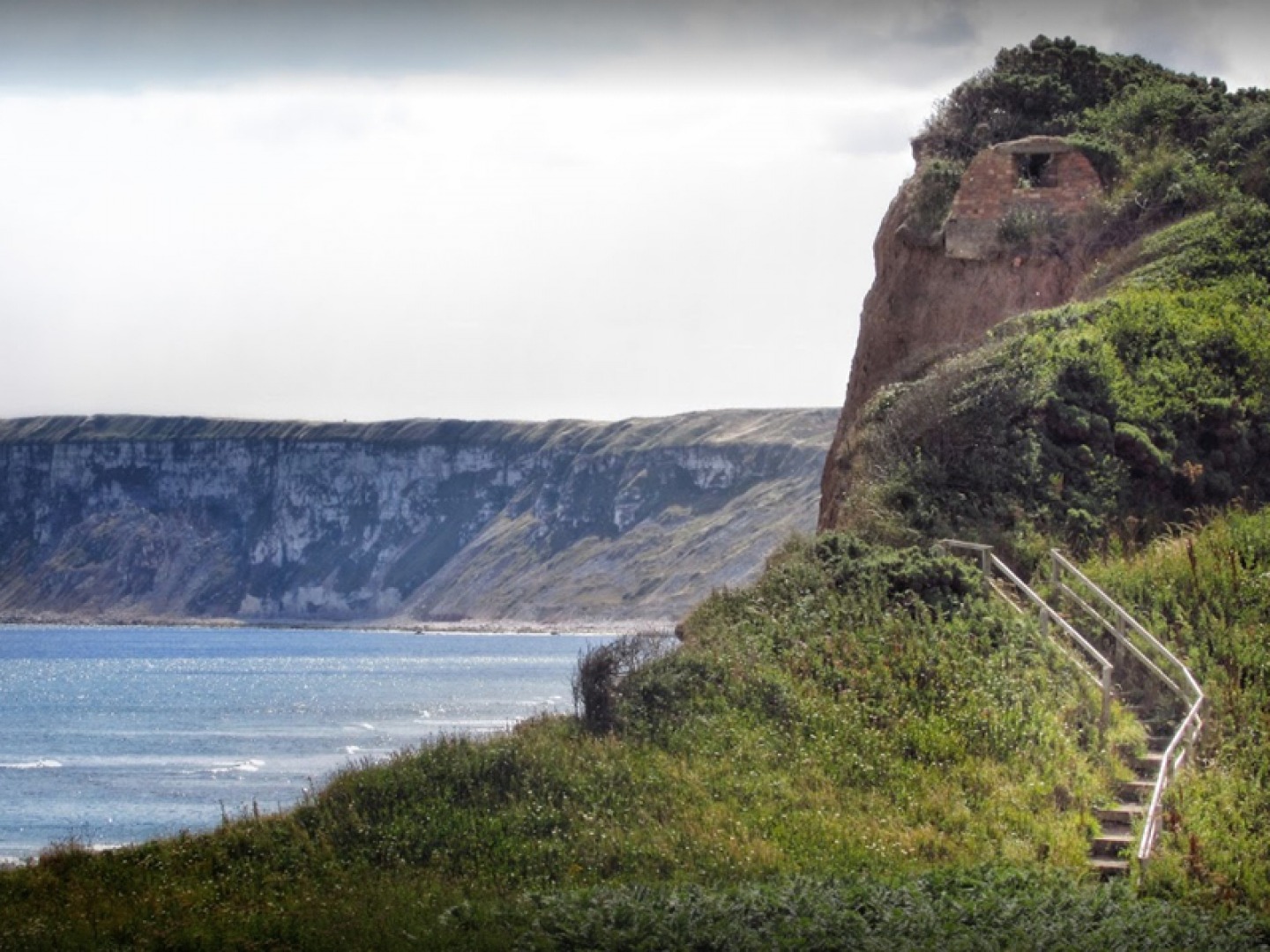4 Scenic Summer Walks in Yorkshire
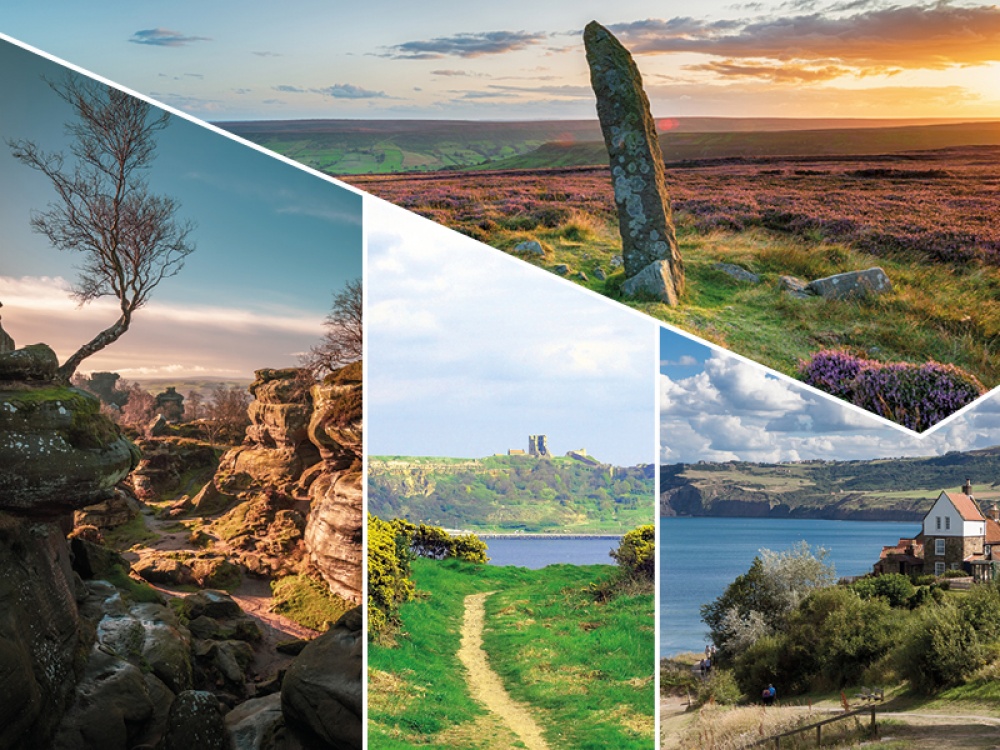
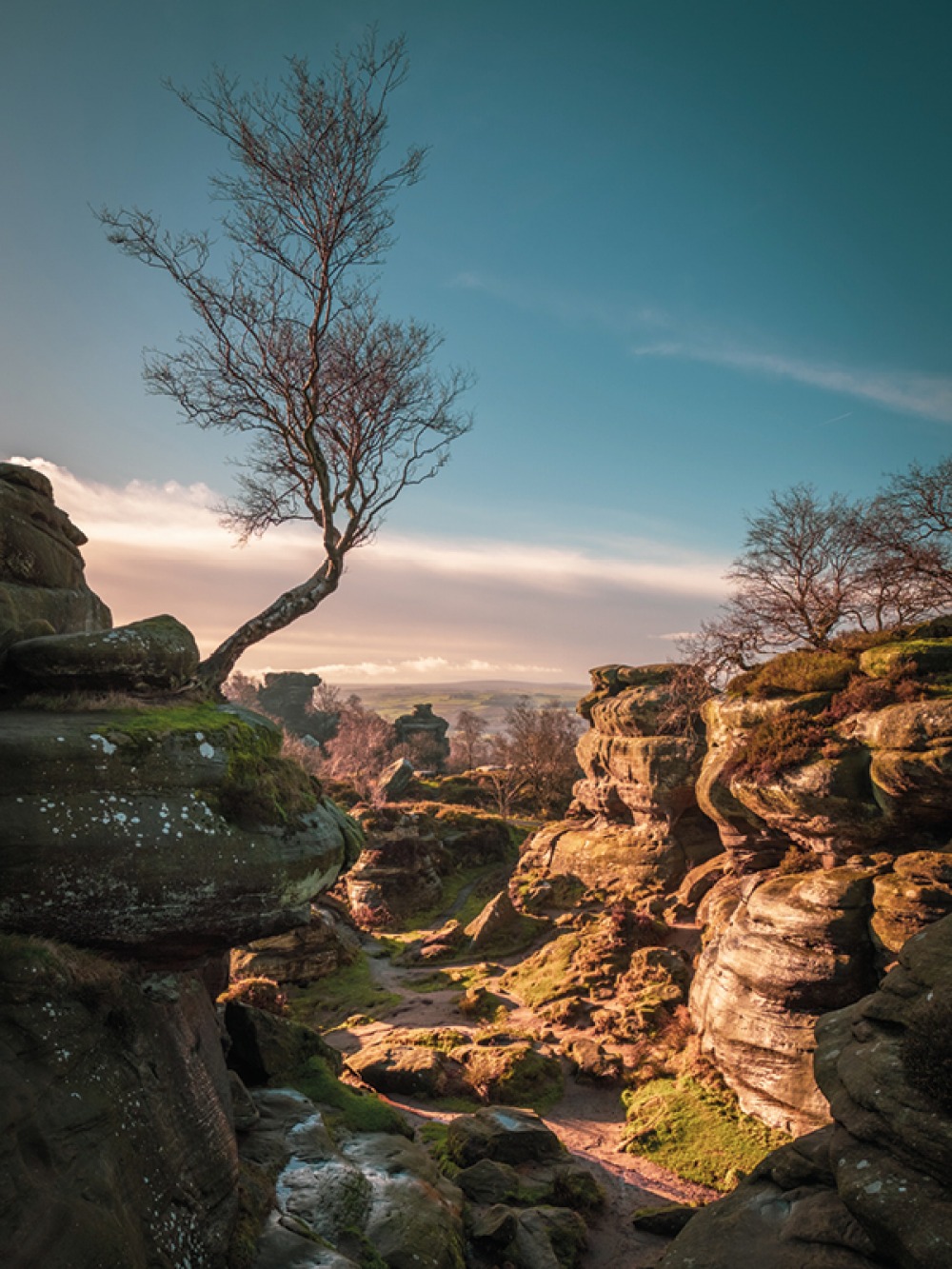
Bordering the Yorkshire Dales National Park to the east and the south, quiet and undisturbed, Nidderdale is a protected Area of Outstanding Natural Beauty. The valley, which spans over 200 square miles, contains the wind-weathered gritstone sculptures of Brimham Rocks alongside its highest point Great Whernside, which stands at 704 metres above sea level, and How Stean Gorge, a spectacular limestone ravine carved out over thousands of years and now hugely popular for abseiling, rock climbing and caving.
Nidderdale has an extraordinarily rich industrial heritage. The area was mainly known for its agriculture, and was also of importance in the linen and lead mining industries. Although there are many small settlements here, the only town in this dale is Pateley Bridge, which has seen considerable change over the past 200 years. What was, in Anglo-Saxon times, just a series of scattered farms had a series of disastrous harvests in the 14th century, and Pateley Bridge set up a regular market and annual fair to stimulate trade. The market was held weekly, on a Tuesday, while the fair fell on the 8th September, and is still held, to this day, around a similar time in the Bewerley Park Showground.
The Metcalfe family were responsible for much of the development of Pateley Bridge and Nidderdale as they made investments in mills, quarries and breweries. George Metcalfe held a stake in the Scot Gate Ash Quarry, and was instrumental in bringing the railways to Nidderdale – he built an inclined railway from the quarry above the town to allow for quick and efficient transhipment of the stone used for many major building projects. Much of the stone from the Scot Gate Ash Quarry went on to be used in notable public buildings, including Victoria Station and the National Gallery in London.
Throughout the 19th century Pateley Bridge was a highly industrialised small town, but by the 1880s when the lead mines began to decline, and the early 1900s when the quarries and linen mills began to fold too, a period of recession hit the town. It was actually due to a rise in tourism to the area that a period of regeneration was triggered, turning the town into what it is today.
The Nidderdale Way is a 53-mile low-level route which climbs the flanks of the valley for rewarding views over the dale. It’s traditionally walked in four stages: Pateley Bridge to Middlesmoor; Middlesmoor to Bewerley; Bewerley to Ripley; and Ripley to Pateley Bridge, none of which are longer than 15 miles. It’s recommended that the route be enjoyed over four days, which allows for plenty of time to stop off and take in the features along the way, including Ripley Castle, Brimham Rocks and How Stean Gorge.
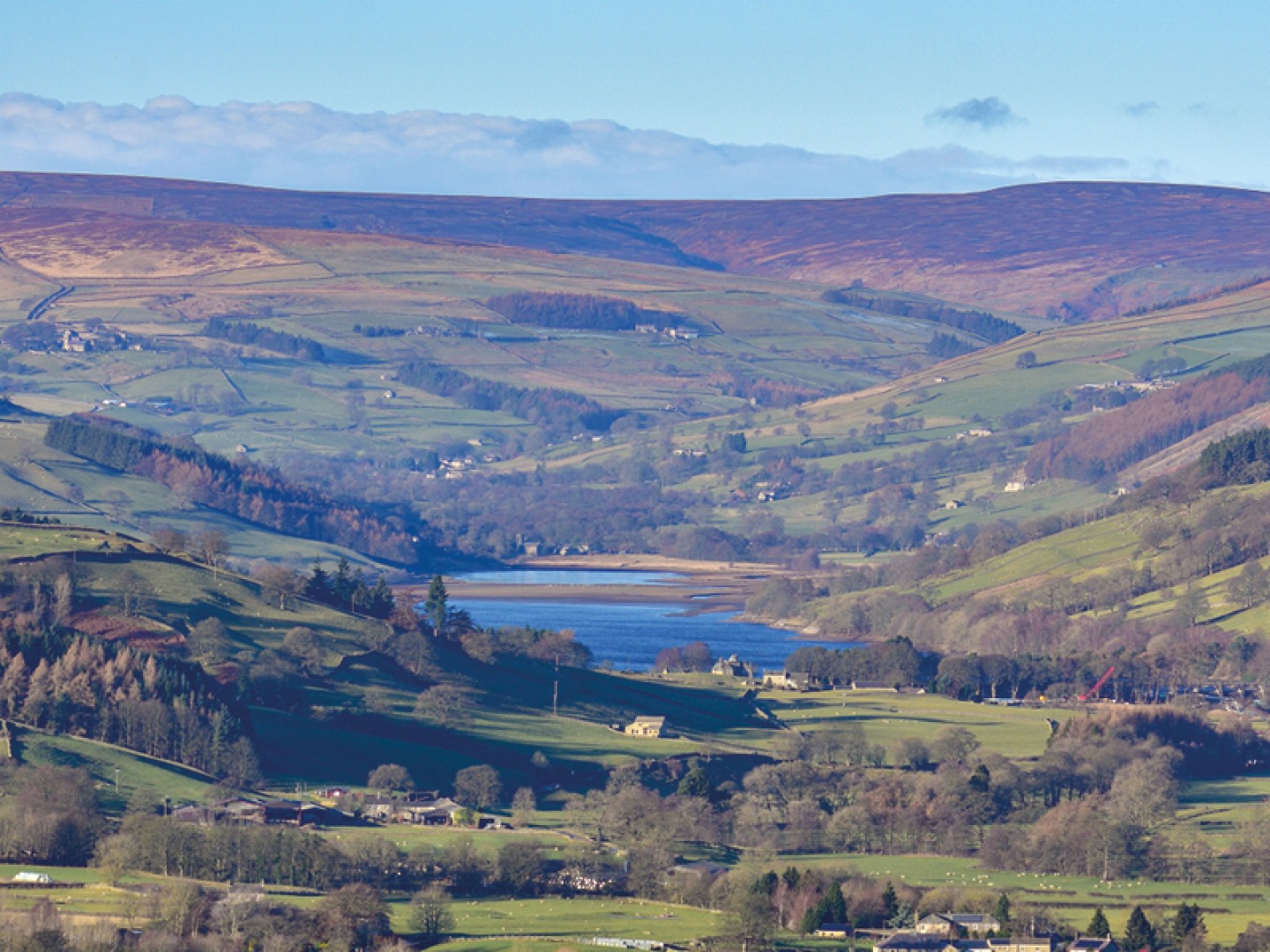

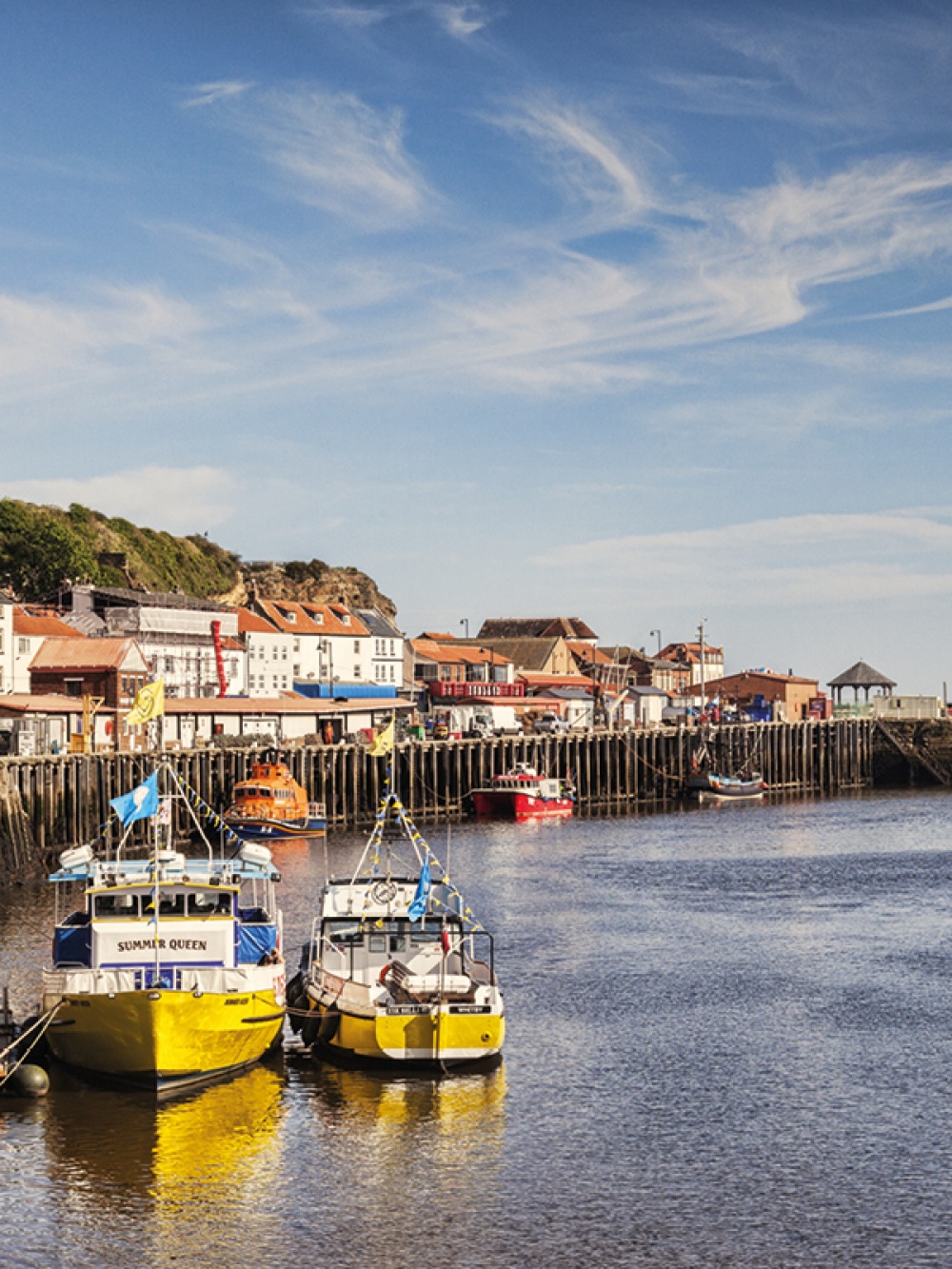
This popular seven-mile trek between these famous fishing and smuggling ports follows part of the Cleveland Way along a beautiful stretch of Yorkshire’s coastline with remarkable clifftop views. Whitby, split by the river Esk, is known the world over for its iconic Abbey, and as the home of Captain Cook. The ruined Gothic Abbey was Bram Stoker’s inspiration for Dracula whilst below, in the town, the Captain Cook Memorial Museum – in the building where Cook lived – displays the explorer’s maps, paintings and navigational instruments. The Whitby Museum and Pannett Art Gallery houses many major collections including archaeology, fossils, paintings, militaria and ceramics, whilst you can discover the geology, history and legacy of the town’s famous jet at the W. Hamond Museum of Whitby Jet. There are a myriad of boat trips to be taken from the harbour – some which will take you to Robin Hood’s Bay should you choose not to walk.
Walkers should start on Whitby’s Quayside, where young Captain Cook learned his trade and where his ship, the Endeavour, was built. Head up the 199 steps to the churchyard of St Mary’s and the infamous Abbey which still stands guard over the town, before striking out along the Cleveland Way, admiring the far-reaching views. You’ll pass the lighthouse and foghorn station before dropping down into a series of gullies as you near the picturesque fishing village (and former smuggling hot-spot) of Robin Hood’s Bay.
More important as a fishing port than its neighbour Whitby during the 16th century, by the 18th century, Robin Hood’s Bay was reputedly the busiest smuggling community on the Yorkshire coast – its coastal position, protected by moorland on three sides, helped this seemingly well-organised trade continue unhindered for many years. Bay wives were known to pour boiling water over excise men from their windows which overhung the narrow, cobbled streets below. Despite regular visits from the excise men (and press gangs) smuggling and fishing thrived here until the mid-19th century, when tourism became an additional source of income for Robin Hood’s Bay. Its winding, cobbled streets, sandy beach and rocky pools make it hugely popular with visitors looking for a day out beside the sea.

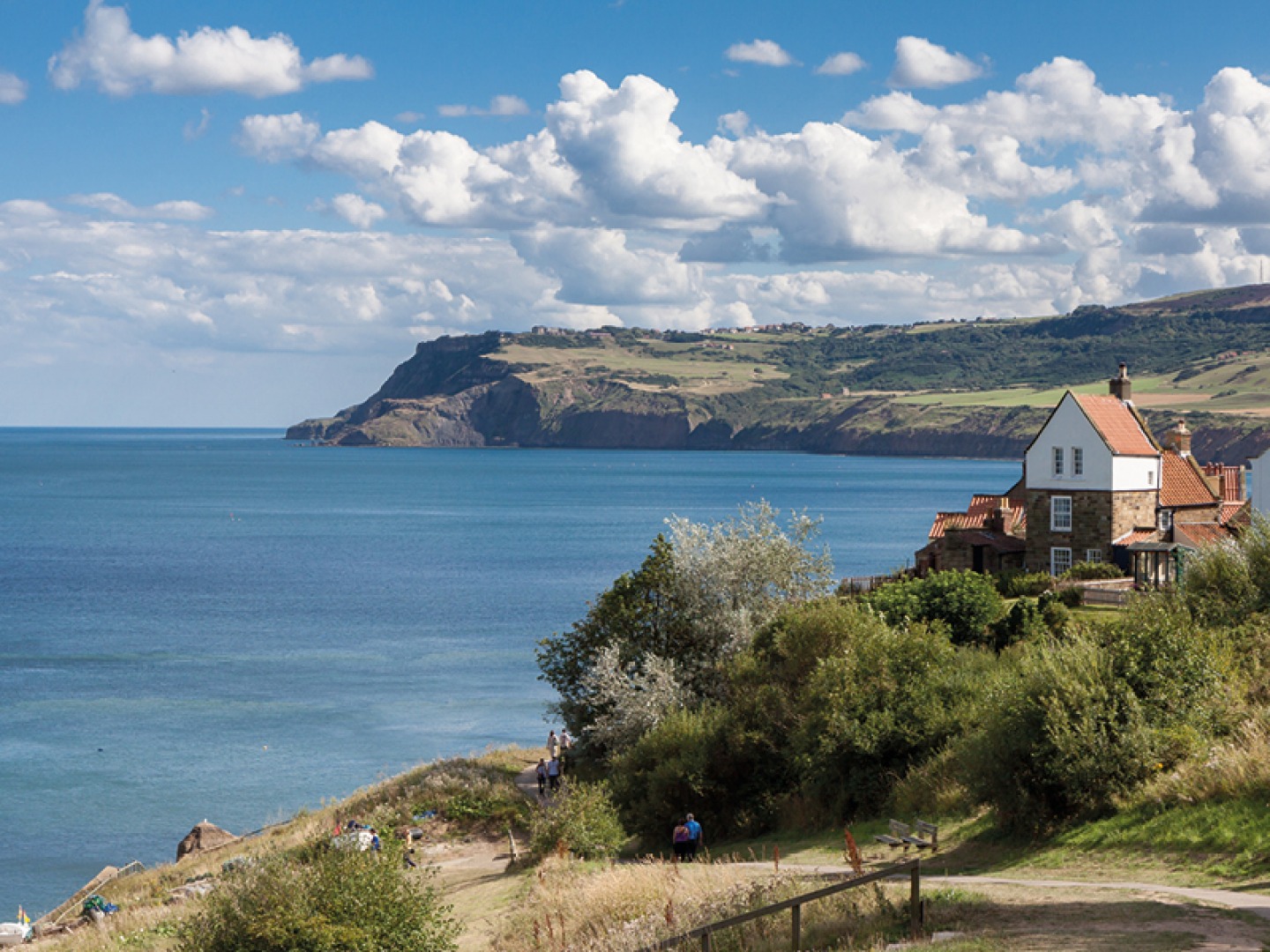
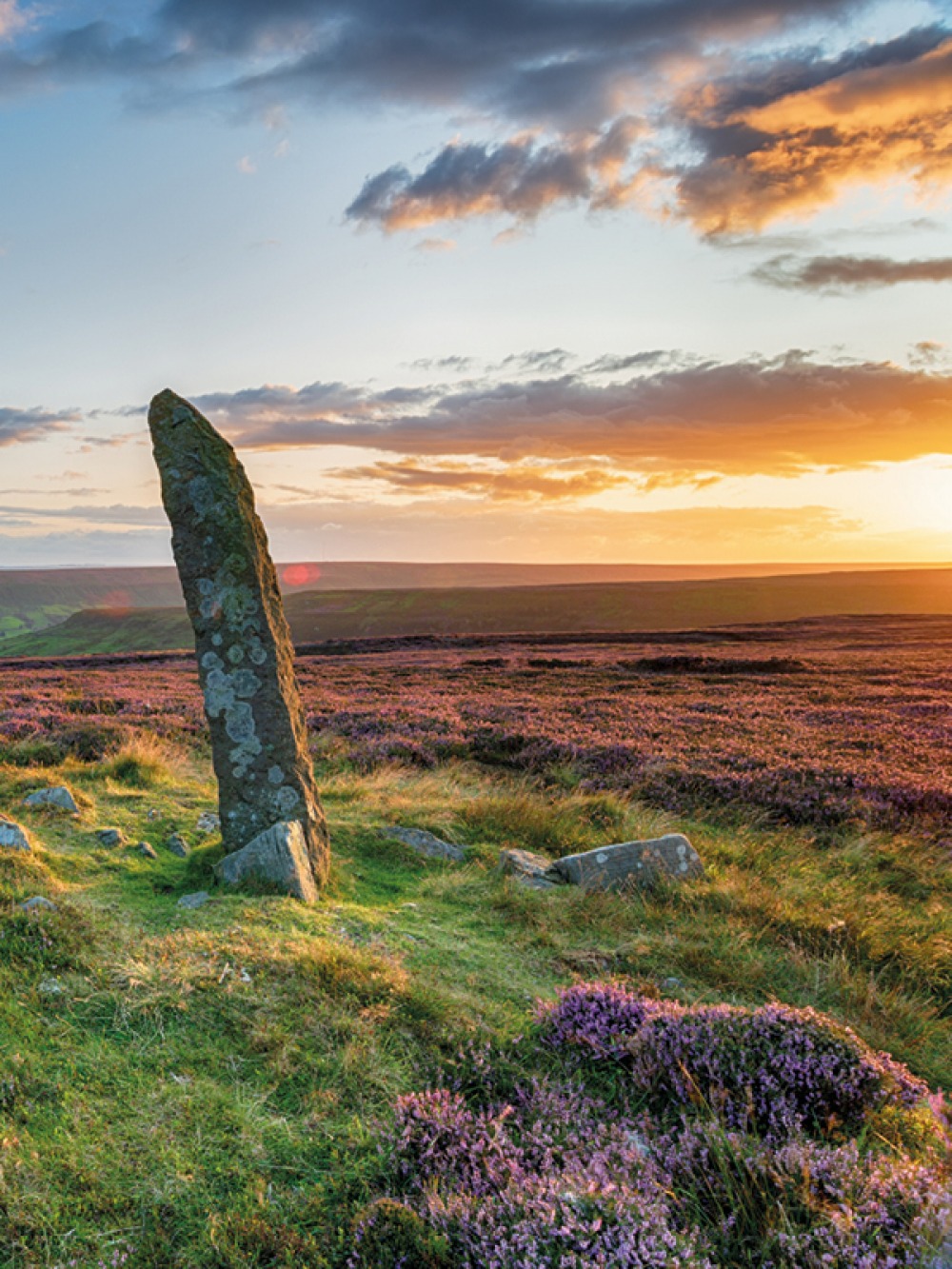
Part of the National Park, a sense of space and solitude defines the North York Moors, where ridge upon ridge of heather-covered moorland extends as far as the eye can see, all dissected by more than 2,300km of paths and tracks – perfect for walkers and cyclists. A fire raged here in 2003 which burned back the heather and unexpectedly revealed ancient rock art – some of the most important prehistoric archaeology found in Britain.
The fire burned for six days and stripped away an area of peat and heather the size of 500 football pitches. Once burned out, the fire revealed long-hidden archaeological remains, including prehistoric burial mounds, long-forgotten reservoirs and even relics of a World War II battle training site with shell craters and tank tracks. RAF Fylingdales on the moor is a radar base and part of the early warning and space-tracking system. Its landmark space station-style pyramids are well known in the area, and to the south is Blakey Topping, a sacred hill worshipped in prehistoric times, although little is known of its real purpose.
Choose a clear day for the four-mile walk between Howdale Moor and Brow Moor to be able to enjoy the amazing views of two very different Yorkshire landscapes – sweeping moorland and the dramatic Ravenscar coastline looking towards Robin Hood’s Bay. Or try the circular Hole of Horcum walk over Levisham Moor. At just over 11km it is a fairly easy walk across wild moorland (although there is a climb at the end) and you should be able to catch sight of Fylingdale’s famous wild birds of prey, including the merlin, Britain’s smallest falcon, and the short-eared owl.
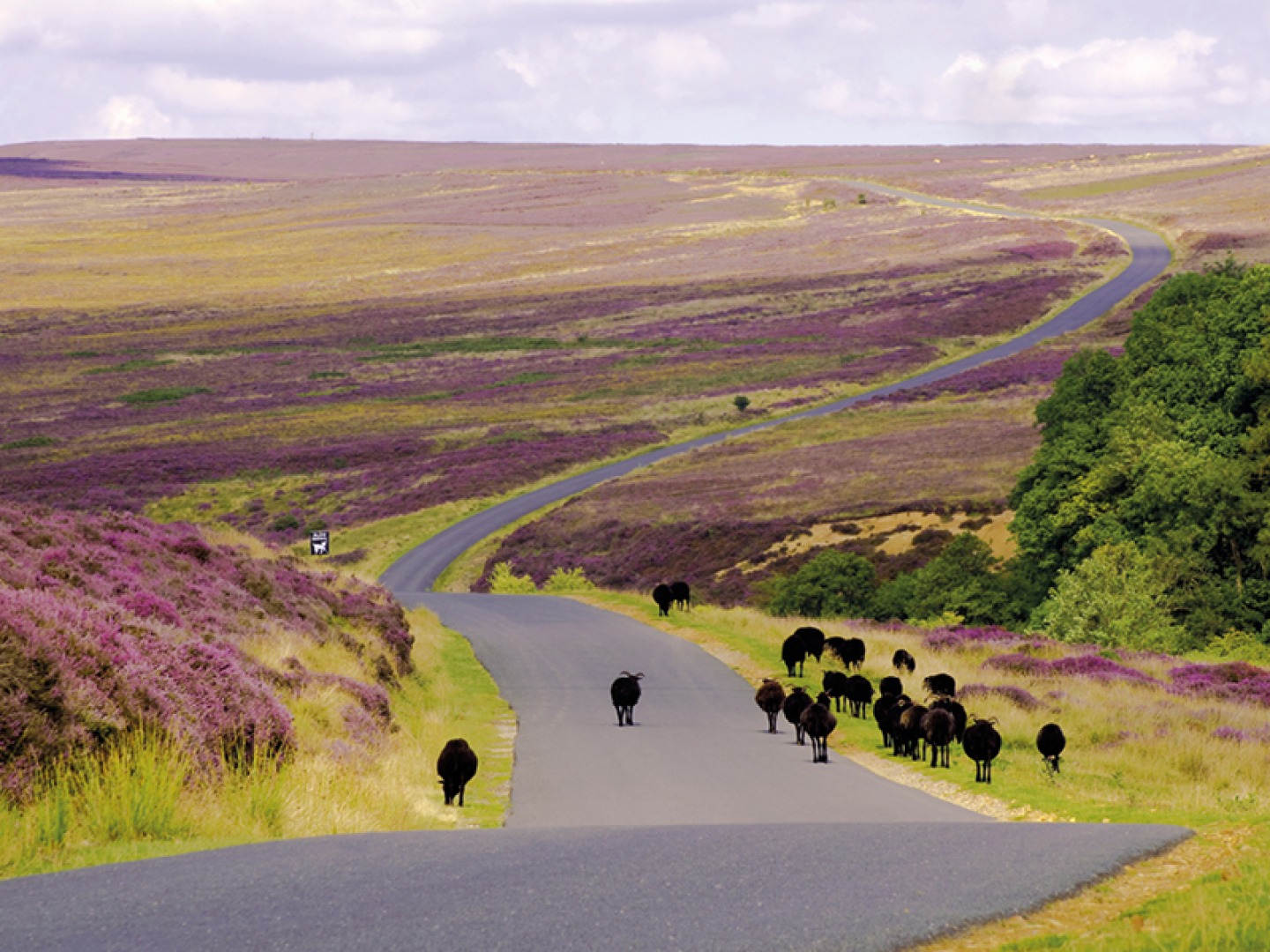

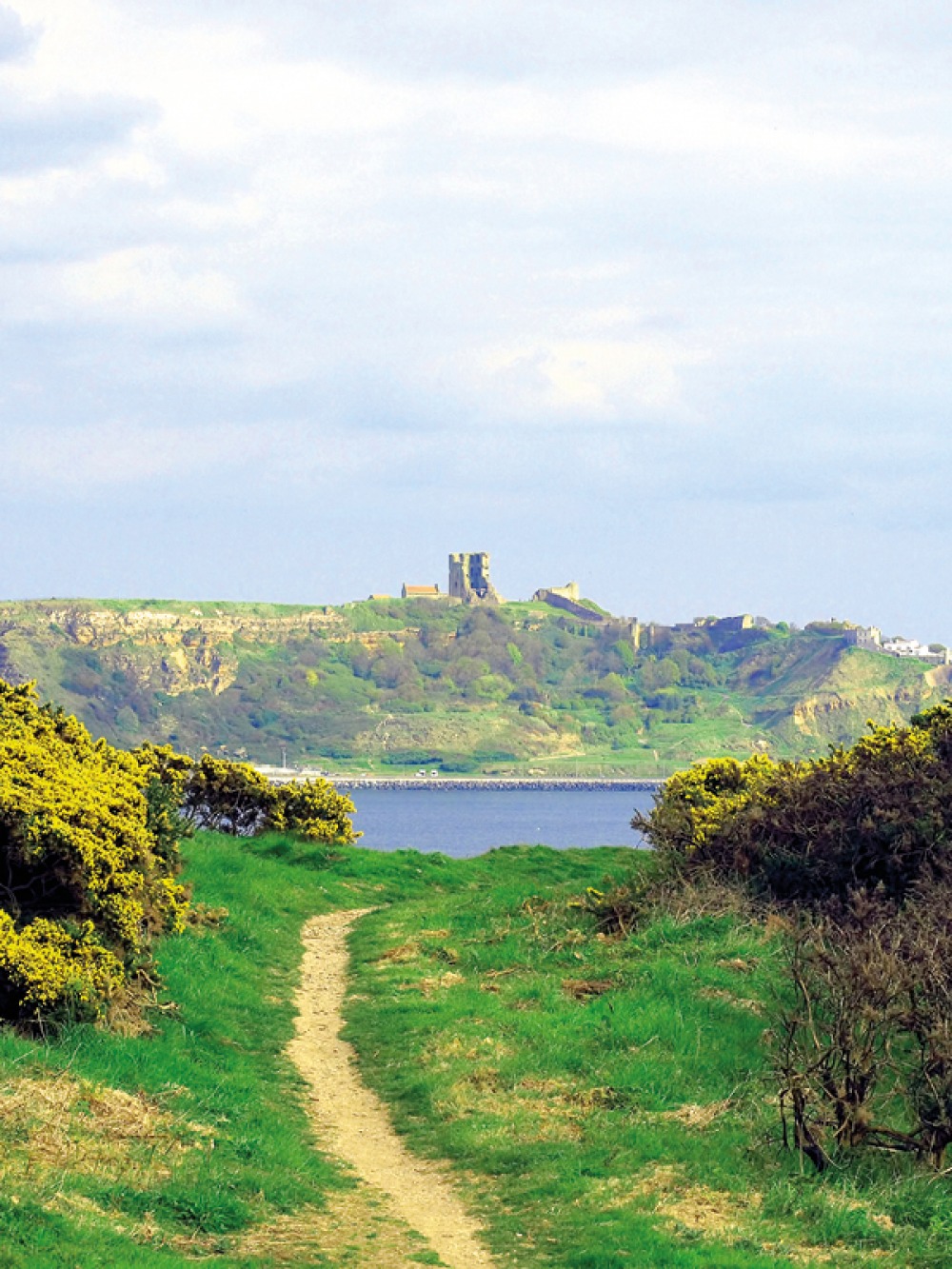
The walk north from Filey to Scarborough is just over seven miles, and is all part of the Cleveland Way which actually starts at Filey. Spend a little time exploring this seaside resort with its vast sweep of soft, golden sand which has made it a popular holiday destination for many families, whilst the Edwardian architecture, quirky shops and cafés make it a great place to explore. Before heading off on your walk, the award-winning Filey Museum and Filey Bird Garden & Animal Park are both worth a visit, as is the 12th century St Oswald’s church, where Charlotte Bronte was named amongst the congregation. Head to Filey Brigg, the rocky headland that extends 1,600 metres into the North Sea and was once used by the Romans as a lookout point for invaders. If the tide is right, you can reach it along the beach and clamber over the rocks before using the steps up the cliff to start your cliff walk, with its breathtaking views which continue all the way to Scarborough. You’ll pass the end (or beginning) of the Wolds Way and there are several beautiful sandy bays beneath you; Gristhorpe Sands and Cayton Bay to name two (there are steps down to the bay from the path here), as well as wooded areas. At Knipe Point, a rocky headland between Cornelian Bay and Cayton Bay, you will have to turn inland towards Osgodby before turning back down to the coastal path.
The walk takes you along Scarborough’s seafront promenade, before climbing up into the town. Known for its two wide, sandy beaches, the promenade, castle headland and fun fair, Scarborough is perfect as a place to while away a few hours. The kids will love Scarborough Sealife and the Alpamare waterpark, exploring the rock pools at Scalby Mills, and riding on the Cliff Lifts which connect the town centre with the seafront. Adults might prefer a visit to the famous open-air theatre, the Japanese Garden in Peasholme Park, or exploring the castle headland which separates the North and South Bays and where the cliffs are home to thousands of seabirds. Finally, head to the seafront where you can grab a seat outside or coffee-to-go from one of the many cafés.

